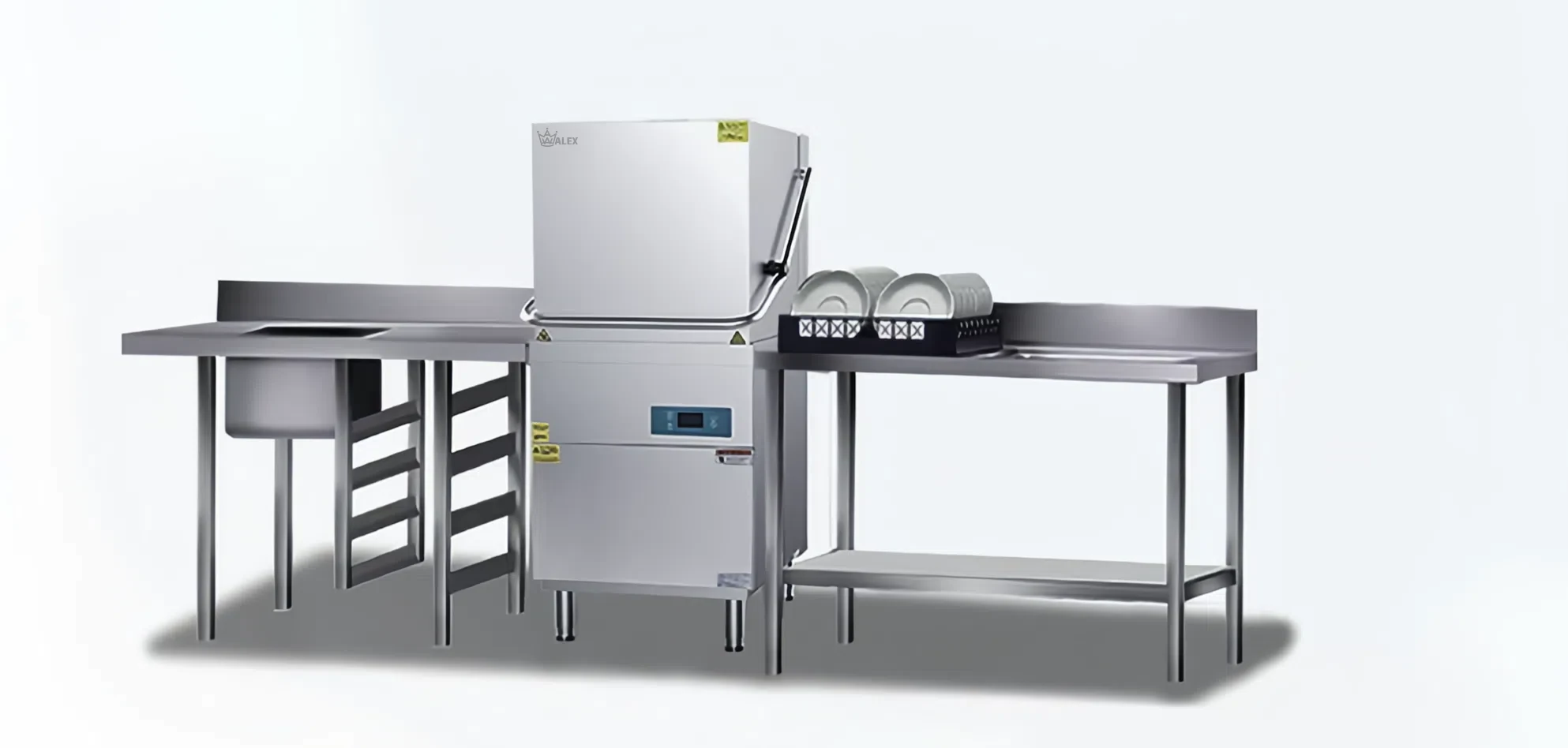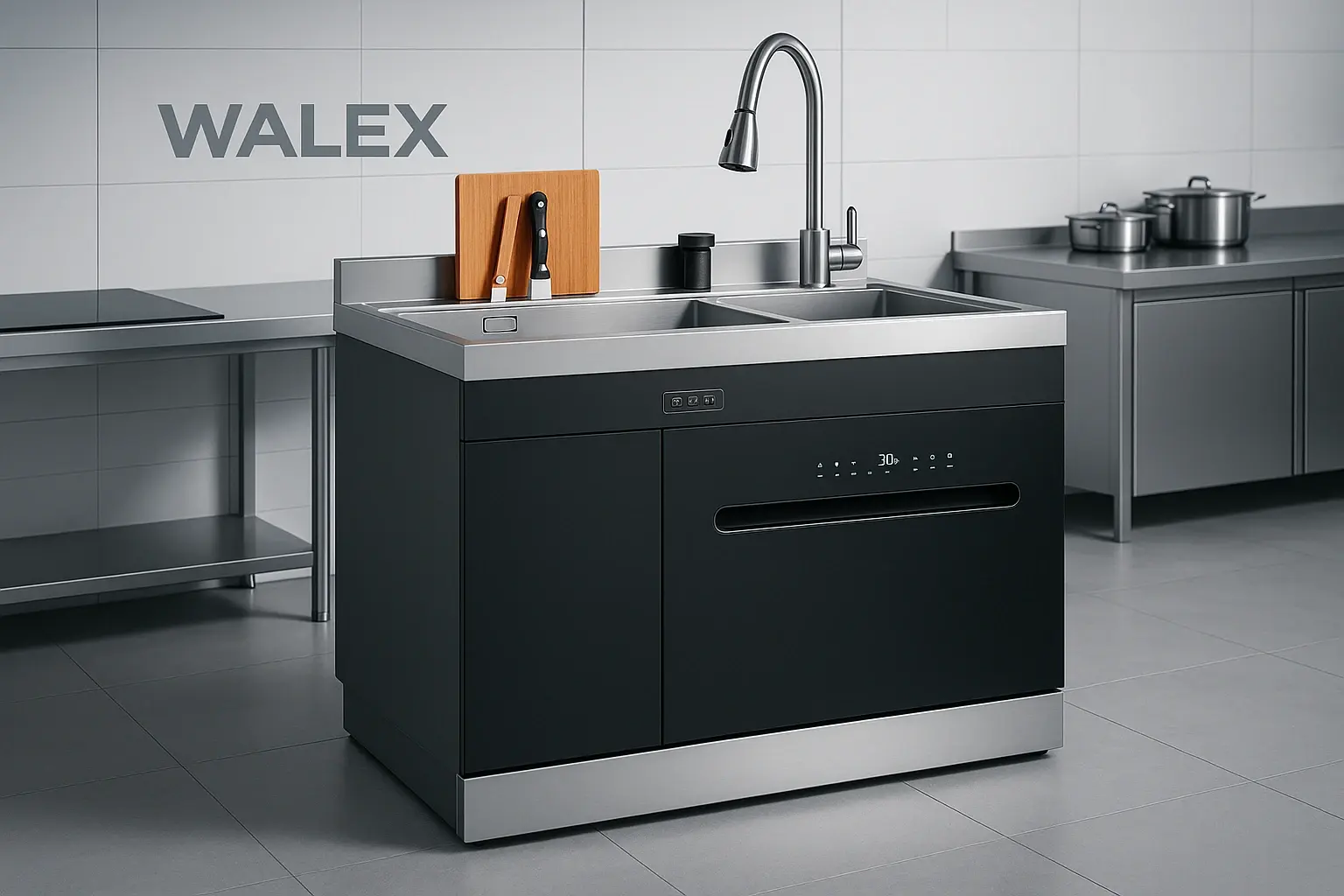This comprehensive case study examines the systematic diagnosis and repair approach for a commercial dishwasher leak in a childcare facility, demonstrating professional troubleshooting methodology and the economic considerations that guide repair versus replacement decisions in commercial kitchen equipment maintenance.
Equipment Background and Initial Assessment
Commercial dishwashers represent critical infrastructure in institutional kitchens, operating under demanding conditions with high-volume throughput requirements. The subject unit, a standard undercounter commercial dishwasher connected to a 2-inch drainage system, experienced persistent water leakage affecting surrounding storage areas. The facility had previously engaged a drain cleaning service, which confirmed clear drainage paths, necessitating a comprehensive mechanical systems evaluation.
Technical Specifications and Safety Protocols
Before initiating any diagnostic procedures, proper safety protocols were established including electrical isolation, water supply shutdown capabilities, and adequate ventilation for confined space work. Commercial dishwashers typically operate at water temperatures between 150-180°F (65-82°C) and utilize high-pressure pump systems generating 15-25 PSI for effective cleaning cycles. Understanding these operational parameters is essential for safe troubleshooting procedures.
The diagnostic approach followed industry-standard systematic methodology, beginning with external visual inspection and progressing to component-level analysis. This methodical approach ensures comprehensive identification of all potential failure points while minimizing unnecessary disassembly time and associated labor costs.
Systematic Diagnostic Methodology
Phase One: External Connection Inspection
Initial examination focused on accessible connection points, particularly hose clamps and fittings at the drainage interface. Loose or degraded clamps represent common failure points in commercial dishwasher installations due to thermal cycling and vibration stress. The discovery of loose clamps on drainage lines suggested potential resolution through basic maintenance procedures.
Professional-grade tools including torque-specific drivers and inspection mirrors enabled thorough evaluation of connection integrity without premature component removal. This conservative approach minimizes disruption to operational equipment while systematically eliminating potential causes. The tightening of loose clamps followed manufacturer specifications to prevent over-torquing damage to plastic components.
Test procedures included full operational cycles with direct observation of all accessible connections under normal operating pressures and temperatures. This real-world testing approach provides definitive validation of repair effectiveness under actual operating conditions rather than static pressure testing alone.
Phase Two: Internal System Analysis
When initial remediation proved insufficient, comprehensive internal system evaluation became necessary. This required complete unit relocation to access supply-side components, demonstrating the importance of proper workspace preparation and mechanical handling equipment for safe appliance movement.
The identification of the vacuum breaker as the failure point represents a critical finding with significant safety implications. Vacuum breakers serve as essential backflow prevention devices, protecting potable water supplies from contamination through cross-connection with potentially contaminated equipment. These devices operate under strict regulatory compliance requirements established by plumbing codes and health department standards.
Critical Component Analysis: Vacuum Breaker Systems
Vacuum breakers function as atmospheric backflow prevention assemblies, utilizing spring-loaded air inlet valves to break siphonic conditions that could draw contaminated water back into supply lines. The fractured connection point discovered during inspection represents a catastrophic failure mode that compromises both operational efficiency and safety compliance.
Failure Mode Assessment
The complete fracture of the vacuum breaker connection fitting indicated material degradation consistent with thermal stress cycling and potential chemical exposure from commercial cleaning agents. This failure pattern commonly occurs in equipment approaching end-of-service life, where multiple stress factors combine to exceed material design limits.
Temporary repair attempts using replacement fittings provided valuable diagnostic information when secondary leakage developed from the vacuum breaker housing itself. This progression of failures confirmed systemic component degradation beyond economical repair thresholds, supporting replacement recommendations over continued maintenance investment.
Economic Analysis and Professional Recommendations
Repair Versus Replacement Decision Matrix
Professional service providers must evaluate multiple factors when recommending repair versus replacement strategies for commercial equipment. Key considerations include equipment age, repair cost ratios, availability of replacement parts, operational criticality, and potential for cascade failures in aging systems.
The vacuum breaker failure, while initially appearing as an isolated component issue, revealed broader systemic degradation patterns indicating imminent additional failures. Industry best practices suggest replacement consideration when repair costs exceed 50% of replacement value, particularly for equipment beyond manufacturer warranty periods.
Cost analysis must include direct repair expenses, potential downtime costs, probability of additional failures, and regulatory compliance implications. In institutional settings like childcare facilities, equipment reliability and sanitation compliance carry additional weight in decision-making processes beyond pure economic considerations.
Interim Operational Continuity
Professional service includes providing temporary solutions to maintain operational capability during equipment transition periods. The implementation of provisional sealing measures allowed continued limited operation while replacement procurement proceeded, demonstrating the importance of practical interim solutions in commercial service environments.
These temporary measures must include clear operational limitations, monitoring requirements, and replacement timelines to ensure both safety compliance and operational planning. Documentation of interim solutions provides liability protection and ensures proper transition to permanent resolution.
Professional Standards and Industry Best Practices
Commercial kitchen equipment maintenance requires adherence to multiple regulatory frameworks including local plumbing codes, health department regulations, and manufacturer specifications. Professional technicians maintain current certification in these areas through continuing education and industry association memberships.
Diagnostic Documentation and Customer Communication
Comprehensive diagnostic reporting includes photographic documentation of failure points, component part numbers, and detailed repair recommendations with cost-benefit analysis. This documentation serves multiple purposes including warranty compliance, insurance requirements, and customer education for informed decision-making.
Effective customer communication involves explaining technical findings in accessible terms while providing clear recommendations supported by professional rationale. This approach builds customer confidence in professional expertise while establishing realistic expectations for equipment lifecycle management.
Conclusion
This case study demonstrates the systematic approach required for effective commercial equipment troubleshooting, emphasizing the importance of comprehensive diagnostic methodology over symptomatic treatment. The progression from simple connection tightening to component replacement evaluation illustrates how thorough professional analysis prevents ineffective partial repairs while guiding appropriate long-term solutions.
Professional service providers add value through technical expertise, proper diagnostic procedures, and honest assessment of repair feasibility versus replacement economics. The integrity to recommend replacement when repair becomes uneconomical maintains customer trust and demonstrates professional commitment to optimal solutions rather than continued service revenue generation.
The vacuum breaker failure case reinforces the critical importance of safety-related components in commercial kitchen equipment and the potential consequences of deferred maintenance in institutional settings. Regular preventive maintenance programs can identify degradation patterns before catastrophic failures, supporting both operational reliability and regulatory compliance requirements.

